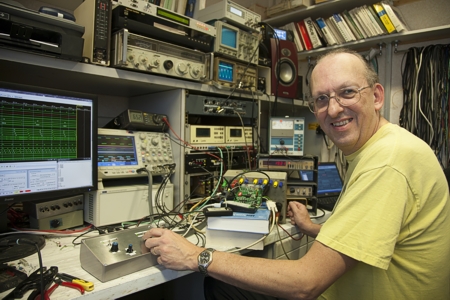
The arrival of the CD / AES3/EBU format in the 1980’s was a pivotal point for the industry, not least because it became a standard across all areas of audio, but also because it is alive and well in the 21st century. During the lifespan of the AES3 format we have seen the available sample rates extended to 96 and 192KHz, but no other extensions in quality. The transport of compressed audio streams was not a step towards better quality, but it did enable multichannel audio to be transported in the bandwidth available from a 48KHz stereo stream, so has found a place in Broadcasting. No further innovations in sound quality have occurred, although the adoption of the AES3 24bit PCM signal into MADI and SDI embedded audio should be seen as a positive step in professional audio and broadcasting generally.
The big weakness of AES3 is the use of 24bit linear PCM rather than something with better dynamic range, given that it is now being used to connect together 32bit or better processing blocks.
Also, a definition of 0dBFS = +18dBU or similar made sense in the days of 16-20bit converters, and continues to make sense for Audio distribution of controlled signals, but is responsible for inadequate overload margin for uncontrolled signals ( from a stage box for example ) , and was increasingly ignored for CD mastering, where the rule is to create a master to 0dBFS with the result that every piece of material has the same peak level, and the listener regularly has to reach for the volume control to set up the desired listening level.
BCD Audio have invented a solution to this level problem, which is based upon a 20bit PCM signal, and a 4bit scale factor. As the total number of bits is the same as AES3, it is transportable with all existing AES3, MADI, Networking and SDI embedded audio links. The 20bit PCM section ensures distortion remains below 0.00008%, and the scale factor allows the dynamic range to be better than 32bit PCM. If adopted properly audio clipping would be consigned to history, and 0dBFS would be an aspiration , rather than a limit!
The main application is in stage box links, digital microphones, and the interconnection of audio equipment in a recording environment, where the added dynamic range and absence of digital clip would transform our industry. There are also 32bit Analogue to Digital, Digital to Analogue and sample rate converter chips coming onto the market, so there is a need to transport at least 32bit linear PCM over existing 24bit digital links.It is not intended to replace 24bit PCM in a controlled level situation, as AES3 with 24bit PCM is perfectly good in this area.
BCD Audio have created a test box that can take in standard AES3 , apply gain , and convert to scaled AES3. We have a version of our AMU that can auto-detect standard or scaled AES3, and pass the signal onto headphones, loudspeakers and a standard AES3 output for measurement. Now gain can applied to a 0dBFS peaking signal, transported with existing 24bit links, and reproduced without clip.
This setup is available for Industry professionals to borrow, and evaluate the sound quality of the architecture, and interested parties are welcome to contact Mike Law at BCD Audio to arrange a demonstration
We have also created a ‘ white paper’ that documents the experiments that were made in late 2014, and this may be downloaded HERE >>

